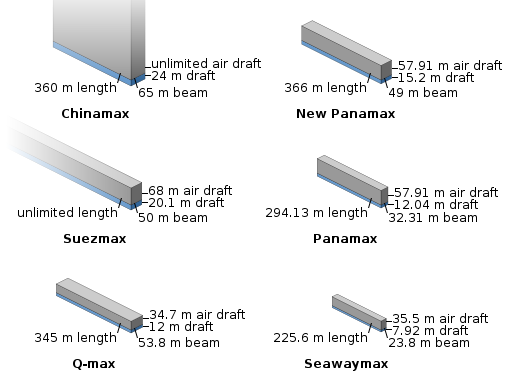BBC News looks at the soon-to-be-launched Triple-E container ships:
What is blue, a quarter of a mile long, and taller than London’s Olympic stadium?
The answer — this year’s new class of container ship, the Triple E. When it goes into service this June, it will be the largest vessel ploughing the sea.
Each will contain as much steel as eight Eiffel Towers and have a capacity equivalent to 18,000 20-foot containers (TEU).
If those containers were placed in Times Square in New York, they would rise above billboards, streetlights and some buildings.
Or, to put it another way, they would fill more than 30 trains, each a mile long and stacked two containers high. Inside those containers, you could fit 36,000 cars or 863 million tins of baked beans.
The Triple E will not be the largest ship ever built. That accolade goes to an “ultra-large crude carrier” (ULCC) built in the 1970s, but all supertankers more than 400m (440 yards) long were scrapped years ago, some after less than a decade of service. Only a couple of shorter ULCCs are still in use. But giant container ships are still being built in large numbers — and they are still growing.
It’s 25 years since the biggest became too wide for the Panama Canal. These first “post-Panamax” ships, carrying 4,300 TEU, had roughly quarter of the capacity of the current record holder — the 16,020 TEU Marco Polo, launched in November by CMA CGM.
In the shipping industry there is already talk of a class of ship that would run aground in the Suez canal, but would just pass through another bottleneck of international trade — the Strait of Malacca, between Malaysia and Indonesia. The “Malaccamax” would carry 30,000 containers.




